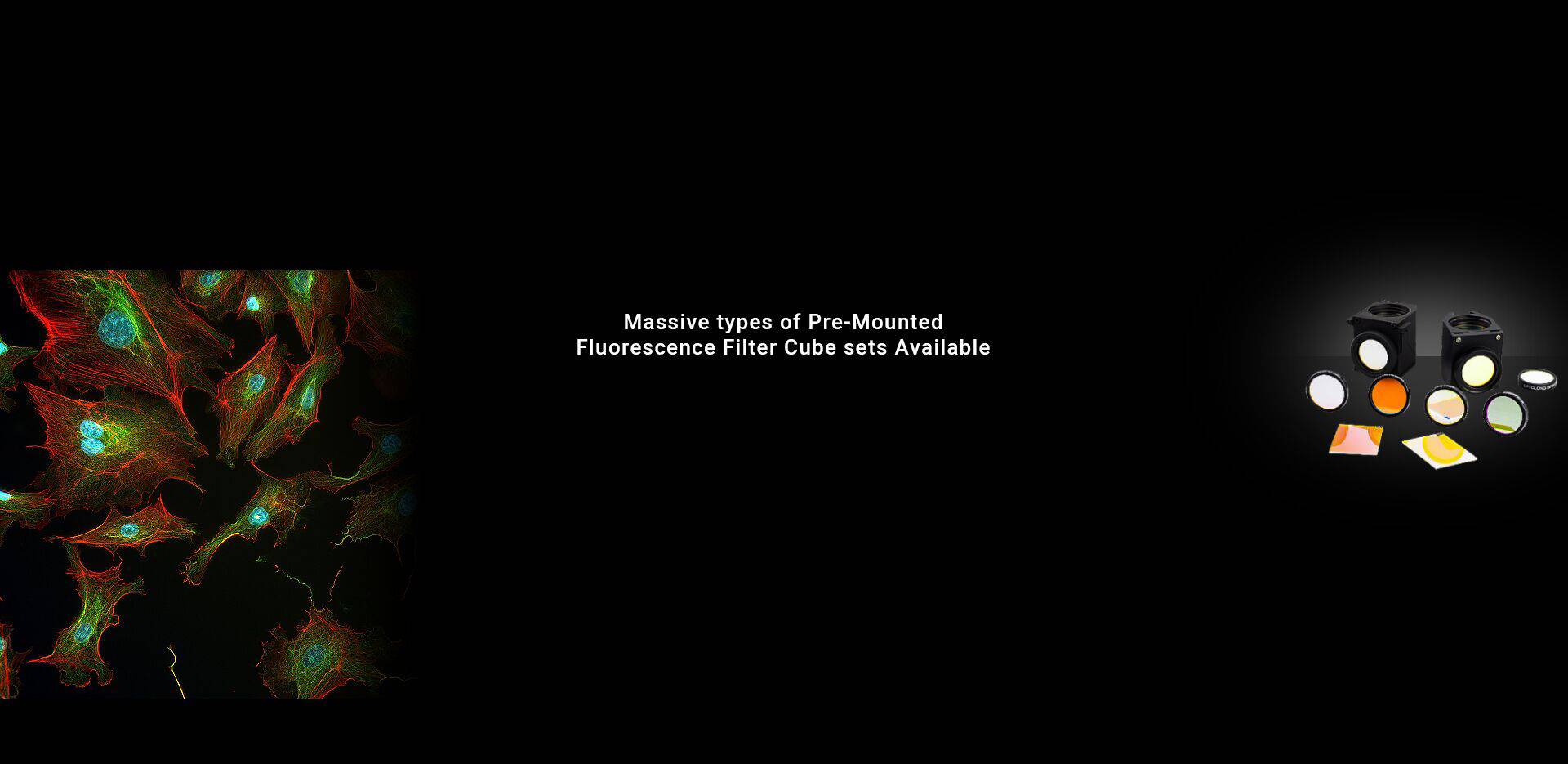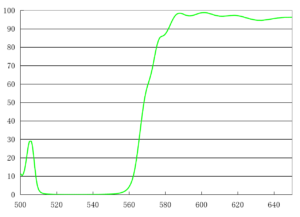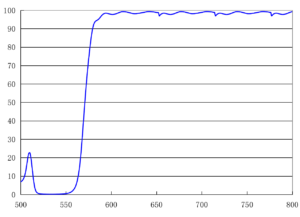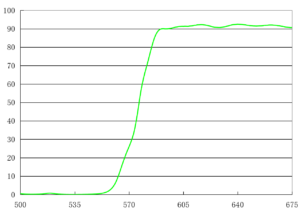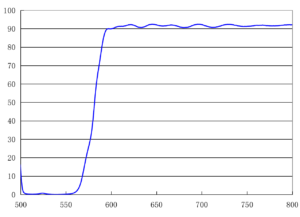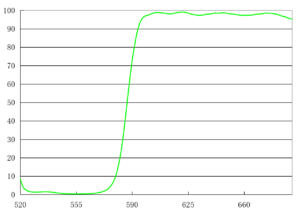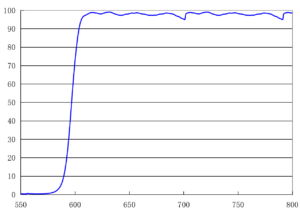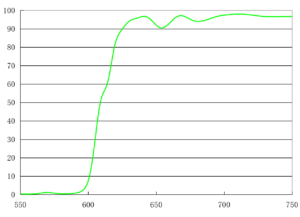-
562nm Dichroic Mirror
Part Number: PN 30017-DM562nm …
More Detail -
562nm dichroic mirror
Part Number: 30033-DM562nm …
More Detail -
565nm Dichroic Mirror
Part Number: PN 31004 DM565nm …
More Detail -
570nm Dichroic Beamsplitters
Filter Type : Dichroic Mirror
Edge Wavelength: 570nm …
More Detail -
575nm Dichroic Mirror
Part Number: 30027-DM575nm …
More Detail -
575nm Dichroic Mirror
Part Number: 31005-DM575nm …
More Detail -
580nm Dichroic Beamsplitters
Filter Type : Dichroic Mirror
Edge Wavelength: 580nm …
More Detail -
585nm Dichroic Mirror
Part Number: PN 30026-DM585nm …
More Detail -
595nm Dichroic Beamsplitters
Filter Type : Dichroic Mirror
Edge Wavelength: 595nm …
More Detail -
605nm Dichroic Mirror
Part Number: 30034-DM605nm …
More Detail
Frequently asked questions
-
A Dichroic Filter (Dichroic Mirror) is an optical filter that selectively reflects and transmits light based on its wavelength.
Unlike traditional mirrors, a Dichroic Filter can simultaneously reflect specific wavelengths of light and allow other wavelengths of light to pass through. This enables it to effectively separate or guide different wavelengths of light in an optical system.
Features:
Wavelength-selective reflection and transmission: Dichroic Filter utilizes precisely designed optical thin film coatings that can reflect light within a specific wavelength range (such as short-wavelength excitation light) and allow other wavelengths (such as longer-wavelength fluorescence light) to pass through.
Angle dependence: The performance of a Dichroic Filter is related to the angle of the incident light. It is usually used at a 45° angle to optimize the light separation effect. -
A dichromatic mirror selectively reflects and transmits light through interference coatings. Its surface is coated with multiple layers of thin films that cause interference based on the wavelength of the light, reflecting light of a specific wavelength while allowing light of other wavelengths to pass through.
Typically, short wavelengths of light are reflected while long wavelengths are transmitted. -
Optolong's dichroic mirrors work for the following wavelength ranges: 405nm, 460nm, 500nm, 505nm, 562nm, 565nm, 575nm, 585nm, 605nm, and 662nm.
-
Be extra careful when cleaning dichromatic mirror. Here are detailed instructions on how to clean and care for your dichroic mirrors:
Gentle cleaning: Use a soft, lint-free cloth and a gentle cleaning solution designed for optical surfaces, ensuring not use harsh chemicals or materials that could scratch your dichroic mirrors.
Avoid using harsh chemicals: Make sure not to use abrasive cleaners or other materials that could damage the mirror coating.
Gentle touch: Apply minimal pressure when cleaning to avoid damaging the coating. Gentle wiping reduces the risk of scratches and damage.
Dust regularly: Dust regularly with a soft cloth to prevent dust, debris, or dirt from accumulating on the dichromatic mirror surface and keep it clean.
Avoid moisture: Make sure your dichroic mirrors stay dry, as too much moisture can damage the coating. Avoid exposing the mirror to high humidity.
Storage: Store your dichroic mirrors in a clean, dry place to protect them from environmental factors such as dust, moisture, etc. -
Yes, our dichroic filters have an anti-scratch coating that effectively enhances durability and scratch resistance. Here are a few key uses of the anti-scratch coating:
Enhanced durability: The anti-scratch coating on our dichroic filters significantly enhances their durability. This means that the mirrors can better withstand daily wear and tear, making them ideal for use in environments where they may be frequently handled or cleaned.
Scratch resistance: This coating effectively prevents scratches, which can degrade the performance of the mirror over time. Scratches on the surface of the dichroic filter can lead to reduced reflectivity and overall efficiency, especially in precision applications such as lighting systems or optical instruments.
Long life and cost-effectiveness: The coating is scratch-resistant, which extends the life of the mirror and reduces the need for frequent replacement.
Optical clarity: Maintaining the integrity of the dichroic optical filter surface is essential to ensure high optical clarity. The anti-scratch coating helps maintain the quality of light reflection and refraction.
Easy maintenance: Dichroic optical filters with anti-scratch coatings are easier to clean and maintain. The coating reduces the risk of damage during cleaning, allowing standard cleaning agents to be used without worrying about scratching the surface.
By combining these points, you can better understand the practical benefits of the scratch-resistant coatings on our dichroic optical filters, ensuring that they remain a reliable and effective choice in a variety of applications. -
Yes, Optolong's Dichroic Beam Splitter supports customization. You only need to contact Optolong and ask them if they can customize the Dichroic Beam Splitter that meets your needs.
They will consider your customization needs and provide corresponding quotes and services. -
Optolong's standard fluorescence filters and astronomical filters can be shipped on the same day of payment receipt.
Other stock filters of different sizes, such as custom filters, can be shipped within 15 days after payment confirmation. -
Dichroic mirrors and beamsplitters are similar in that they both control light, but they function differently:
Dichroic Beam Splitter: These mirrors are designed to selectively pass certain wavelengths of light while reflecting other wavelengths. They are often used in applications where specific wavelengths need to be separated or filtered.
Beam splitter: A beamsplitter is an optical device that can split a beam of light into two or more beams. They usually split light based on intensity rather than wavelength, and are used in various optical systems to separate the light path.
In short, while both beam splitters and dichroic beam splitters manage light, dichroic beam splitters focus on wavelength selection, while beam splitters focus on splitting light into separate beams. -
No, Optolong's mirror filter will have different prices according to different specifications.
You can leave your needs under the product page you want, and they will contact you as soon as possible after receiving the information. -
In fluorescence microscopy, a dichroic optical filter plays a vital role by selectively reflecting and transmitting light according to wavelength. Its working principle is as follows:
Separation of excitation light and emission light
The dichroic optical filter is located in the light path at a 45-degree angle. It reflects shorter wavelength light (excitation light) toward the sample and transmits longer wavelength light (emission light) from the sample to the detector. This effectively separates the excitation light from the fluorescence emitted by the sample.
Efficient fluorescence detection
The mirror ensures that the excitation light used to excite the fluorescence does not directly reach the detector. Only the fluorescence emitted by the sample (usually with a longer wavelength) will pass through the mirror filter and reach the detector. This minimizes background noise and improves the clarity and sensitivity of imaging.
The key to multicolor imaging
In multicolor fluorescence microscopy, multiple fluorescence signals can be detected simultaneously using different dichroic optical filters. Each mirror is designed to selectively reflect and transmit a specific wavelength range, which can separate and capture different fluorophores in the sample.
In summary, the mirror filter can effectively and accurately separate the excitation light and emission light in fluorescence microscopy, thereby achieving high-quality imaging of fluorescently labeled samples.
